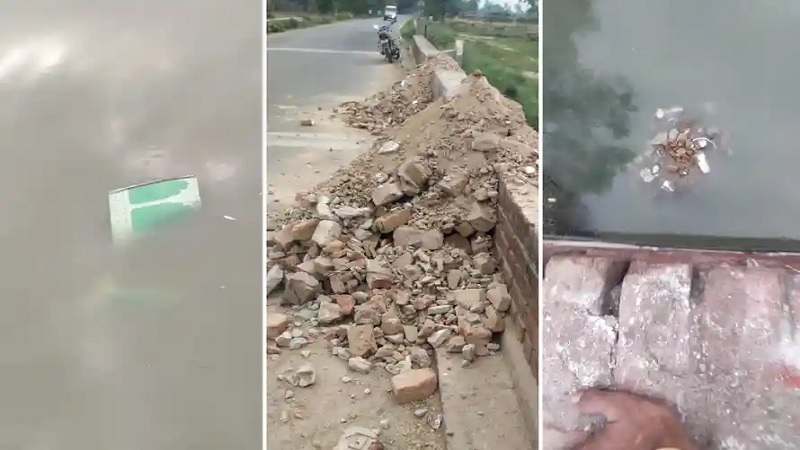
A mosque that had existed peacefully in Ram Sanehi Ghat, a city in Barabanki, in Uttar Pradesh, for decades, has been bulldozed. According to a report in The Guardian, the destruction of the Mosque has violated a High Court order. This action in Uttar Pradesh, already a communally sensitive state, as the Guardian puts it is “one of the most inflammatory actions taken against a Muslim place of worship since the demolition of the Babri Mosque by a mob of Hindu nationalist rioters in 1992.”
As per the documents held by the mosque committee, the place of worship had stood for at least six decades, perhaps more. According to the report, it was on Monday, that the police and other security services arrived, and cleared the area of people, they then “brought in bulldozers and demolished the mosque”. It has been reported that the “debris was then thrown into a river” hence leaving no or little ‘evidence’ of the destruction. This destruction, which can have a long lasting negative impact, comes in the middle of the Covid-19 pandemic, which has been at its worst in some states including Uttar Pradesh.
Security forces are still said to have been deployed in the area now “to prevent anyone coming within a mile of where the mosque stood”, stated the news report. The Guardian quotes the local imam, Maulana Abdul Mustafa, who is also a member of the mosque committee, saying that the mosque was “hundreds of years old” adding that “thousands of people have been coming here five times a day to offer namaz.” He said that the Muslims of the area were scared, and so did not dare to go towards the mosque, let alone protest, when it was being demolished. He added that in the aftermath of the demolition, “several dozen people are leaving their homes and hiding in other areas out of the fear of the police.” However, the District Magistrate, Adarsh Singh, told the Guardian, “I do not know any mosque. I know there was an illegal structure. The Uttar Pradesh high court declared it illegal. That’s why the regional senior district magistrate took action. I will not say anything else.”
However, according to the report, this demolition is in violation of a high court order dated April 24. The HC had ordered that the mosque should be protected from any eviction or demolition until May 31. On March 15, the local administration had issued a “show cause” notice to the mosque committee. The committee was asked to explain “how the building’s location was chosen and citing an intention to demolish it on the grounds that it was an illegal structure.”
According to the news report, the mosque committee “sent a detailed response, including documents demonstrating the building had an electricity connection from 1959, but the local administration did not take the response on to official record.” The committee approached the Allahabad High Court on March 18, stating concerns of “imminent demolition” that the mosque faced and the HC passed an order seeking a reply from the local administration on what “grounds on which it had established that the mosque had been illegally built and was obstructing traffic, even though the structure did not sit on a road” reported The Guardian.
Meanwhile, a “structure” was built around it, allegedly blocking the access to the mosque in the next few days. And on March 19, the Guardian reports, the local Muslims “were prevented from entering the mosque for Friday prayers, causing tension and protests in the area”. It was reported that over 35 local Muslims who had protested were subsequently arrested, and more protesters were named in the police reports.
These actions by the administration raised concerns of the mosque committee which in April filed a public interest litigation in the high court, stated the news report. On April 24, the HC ordered that “any orders of eviction, dispossession or demolition …shall remain in abeyance until 31.05.21”. However, on Monday, May 17, the mosque was razed to the ground amidst heavy police deployment. According to the Guardian, “Local Muslims in the area, including members of the mosque committee, said they had gone into hiding over fears they would be targeted and arrested.” The Guardian highlighted that this area is in a district that “is adjacent to Ayodhya, where the Babri Mosque stood before its demolition in 1992.”
India Today had reported that UP’s Adityanath-led government’s Home Department had issued instructions on March 12, “to demolish all religious places on the roads or along them constructed after January 2011” adding that the government said “religious places built before January 1, 2011, will be shifted elsewhere.”
However, this demolition is in clear violation of the HC ruling that “any orders of eviction, dispossession or demolition …shall remain in abeyance until 31.05.21”.




